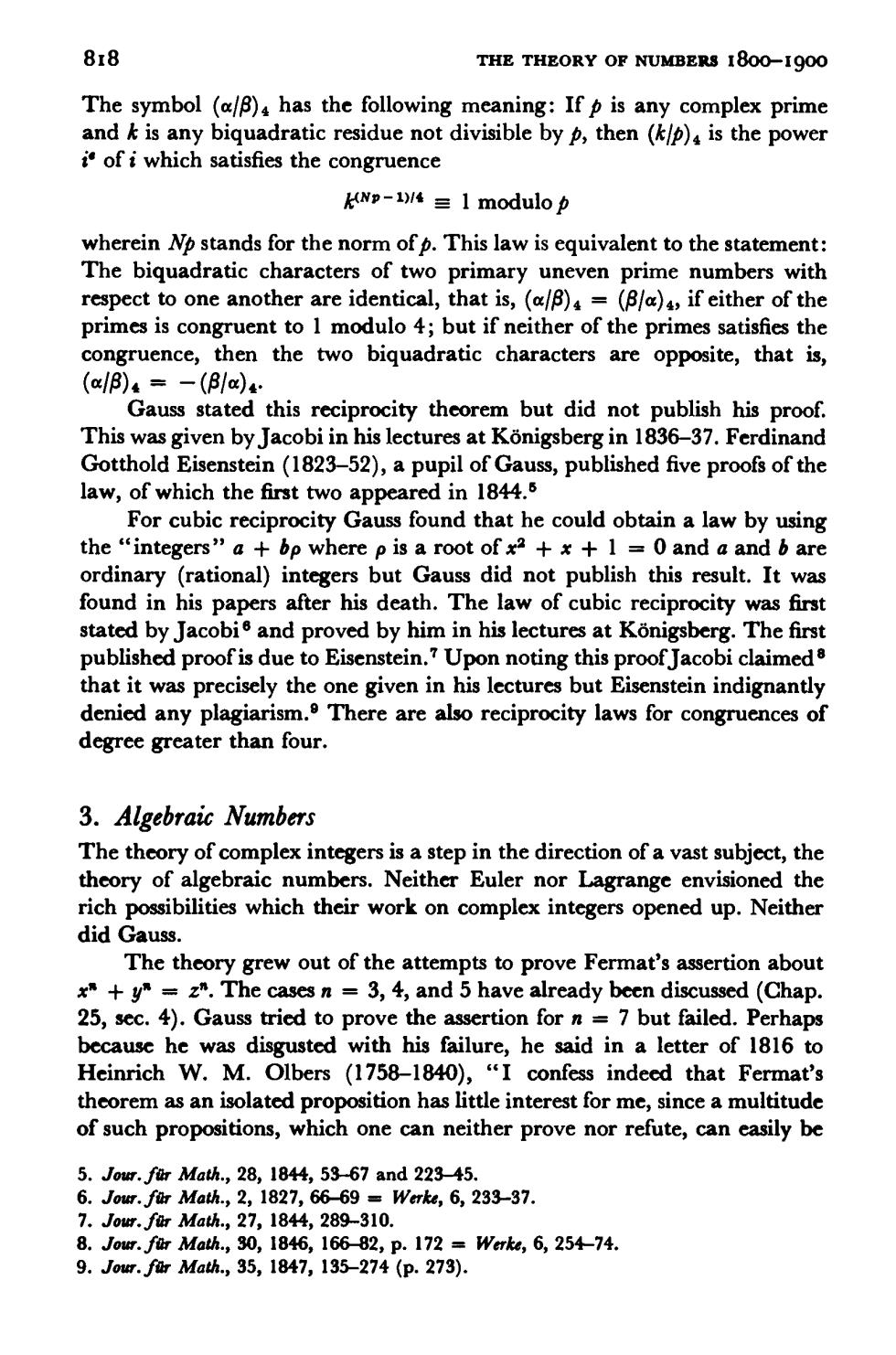正在加载图片...

8r8 THE THEORY OF NUMBERS 1800-1900 The symbol (/B)has the following meaning:If p is any complex prime and k is any biquadratic residue not divisible by p,then(k)is the power ofiwhich satisfies the congruence KNP-)/4=1 modulo wherein No stands for the norm of.This law is equivalent to the statement: The biquadratic characters of two primary uneven prime numbers with respect to one another are identical,that is,(a/B)=(B/a)4,if either of the primes is congruent to 1 modulo 4;but if neither of the primes satisfies the congruence,then the two biquadratic characters are opposite,that is, (aB)4=-(/a) Gauss stated this reciprocity theorem but did not publish his proof This was given by Jacobi in his lectures at Konigsberg in 1836-37.Ferdinand Gotthold Eisenstein(1823-52),a pupil of Gauss,published five proofs of the law,of which the first two appeared in 1844. For cubic reciprocity Gauss found that he could obtain a law by using the"integers"a+bp where p is a root of x+1=0and a and b are ordinary (rational)integers but Gauss did not publish this result.It was found in his papers after his death.The law of cubic reciprocity was first stated by Jacobi and proved by him in his lectures at Konigsberg.The first published proof is due to Eisenstein.7 Upon noting this proof Jacobi claimed that it was precisely the one given in his lectures but Eisenstein indignantly denied any plagiarism.There are also reciprocity laws for congruences of degree greater than four 3.Algebraic Numbers The theory of complex integers is a step in the direction of a vast subject,the theory of algebraic numbers.Neither Euler nor Lagrange envisioned the rich possibilities which their work on complex integers opened up.Neither did Gauss. The theory grew out of the attempts to prove Fermat's assertion about x+y=z".The cases n 3,4,and 5 have already been discussed (Chap. 25,sec.4).Gauss tried to prove the assertion forn=7 but failed.Perhaps because he was disgusted with his failure,he said in a letter of 1816 to Heinrich W.M.Olbers (1758-1840),"I confess indeed that Fermat's theorem as an isolated proposition has little interest for me,since a multitude of such propositions,which one can neither prove nor refute,can easily be 5.Jow.fMah.,28,1844,53-67and22345. 6.Jow.fur Math.,2,1827,6669=Werk,6,233-37. 7.Jow.fMah,27,1844,289-310. 8.Jow.fur Math,30,1846,166-82,p.172=Wek,6,25474. 9.Jom.fMah,35,1847,135-274(p.273)